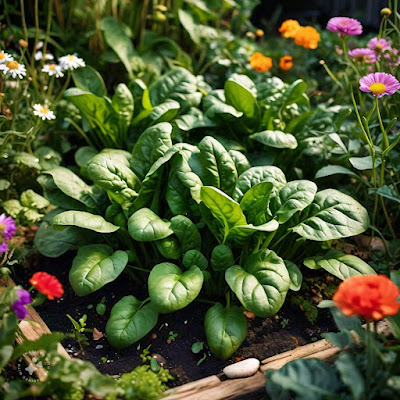Mid to late August is an ideal time for planting greens and root crops. The days are getting cooler, and the soil is warm and easy to work. Warm late-summer days encourage good growth while the cooler nights bring out the flavor of your fall crops. Most cool weather crops don't need a full day of sunlight to grow. The spot in your garden that didn't have enough light to grow tomatoes, will do just fine for spinach, lettuce or arugula.
Fall crops are available as transplants or you can plant them from seed. Choosing transplants will result in faster harvest times for crops such as Cabbage, Kale, Collards and Broccoli. Starts can be found in our Annuals House, seeds in our Gift House.
If you choose to plant from seed, look at the days to maturity information or days to harvest on the package or label. This is roughly the amount of time from planting seeds to picking your crops. The shorter the days to maturity, the faster you’re harvesting. Radishes for example, mature in about 25 days (about 3 and a half weeks), so if you plant them now, you’ll be picking radishes in less than four weeks.
For best success with your second season planting, begin by cleaning up any lingering weeds or vegetation at the planting site, then dig in two to three inches of compost into the site. Sheep, Peat and Compost is a good choice. It’s produced locally and it works to improve your soil.
Don't have room in the garden? Cool weather crops are shallow rooted so it's easy to plant seeds or transplants in a container on the patio. Replenish the soil with Flower Bin Potting Soil, or Happy Frog Potting Soil. Happy Frog Potting Soil comes with a fertilizer to help get your plants started right.
Summer vegetable crops will have depleted most of the nutrition in your soil, so adding a granular organic fertilizer at this time will keep your cool weather crops going strong, whether you choose to grow them in the ground, in pots or some combination of the two. Choose from True Organics or Happy Frog organic fertilizers.
Make the most of your space by planting some Packman broccoli or Bloomsdale spinach along the edge of your perennial garden.
Potted petunias and other flowering annuals starting to look tired? Plant some colorful Bright Lights Swiss Chard or Red Winter Kale seed or starts of Early Snowball cauliflower, in their place.
Take advantage of the cooler temperatures to try some Asian greens such as Mizuna or Bok Choy. Asian greens add unusual shapes, textures and spicy flavors to salads. More choices to plant now include basil, cilantro, chives, dill, lavender, cabbage, beets, and radishes. These cool weather crops will do fine, and you can harvest fresh greens well into fall.
Keep a frost cloth handy for those nights when cooler temperatures threaten your crop. This will help extend your "greens" garden well into late fall.
There's nothing like a dinner salad picked from your own garden. It's fresh and you know exactly what's in it.











I really appreciate this guide on planting cool season crops! It's great to know that mid to late August is the perfect time to get started. For those interested in maximizing their fall harvest, it's worth considering various options for planting. For example, if you're wondering about the specifics of how deep to plant onions, you can find useful information in this detailed article on planting onions. Using the right techniques can make a significant difference in your crop yield. Thanks for sharing these valuable tips!
ReplyDelete